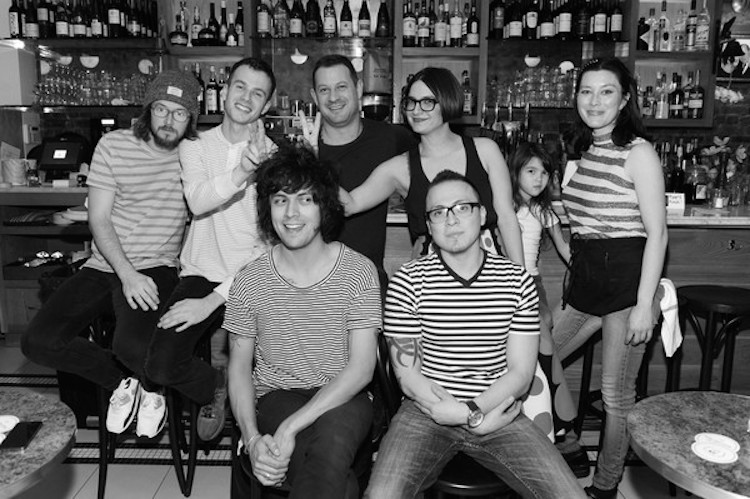
The Power of Community
We all crave the sense of belonging that comes with being part of a community, the fellowship with others that results from sharing common interests and goals. These types of connections fulfill the human spirit; they feel good. Habitually, we’re driven to organize ourselves into these groups: by industry, religion, hobby, sports teams, even the television shows we watch. Therefore, to effectively share your ideas, it’s critical you recognize the importance of communities and how they’ve evolved.
In the Industrial Age, communication was a one-lane highway. Messages went out from those in control of the distribution channels and were consumed by the watchers and listeners. There were fewer options, no DVR, and limited places to comment or criticize. For the most part, consumers enjoyed what was available. The only way to amplify your message was to spend more money on advertising. The more you spent promoting your message, the more exposure your message received. Whether the audience liked the message was a guessing game, and the flow of information was relatively predictable.
Today, the cost of communicating is far less and digitally, the reaction is instant and measurable. While you can still buy distribution, the more you advertise or sell, the less engaged the communities you desire to reach will be. Trust has replaced money as the most valuable commodity in communication. We pay significantly more attention to messages from sources we trust. Additionally, that one-lane highway has become a multilane one, with messages circulated and recirculated by communities with overlapping interests. For instance, a fashion blogger in Japan starts following a restaurant in New York, where a young chef is making croissant ice cream cones filled with matcha soft serve, so he posts the photo, and it gets picked up by an ice cream blog in Sydney that’s followed by a mommy blogger in London, who writes a story about it, and eventually, it ends up being adapted by Little Timmy’s mom for his birthday cake in Shoreditch.
Instead of sending out one-way messages, aka traditional advertising, we must now relate to these overlapping communities by appealing to their shared beliefs, values, and struggles. Airbnb is a perfect example. They tapped into a multitude of communities of underserved travelers looking for a more connected, localized, and experiential ways to travel. It took them years to establish the level of trust needed with their target communities, but once they did, the travelers made the brand their own and organically amplified their message. When you find communities that share your belief system, you must contribute meaningfully and consistently. For some, this may mean sharing information or creativity, while for others, it may mean throwing events or giving to charity. The more value and energy you provide to your community, the more likely they’ll adopt and share your ideas as their own. While it requires patience and time, anything worth doing requires a significant investment. This type of cultivated amplification is the result of doing the right thing over a long period of time, and consistently doing the right thing is the special sauce of modern marketing.
But you don’t have to be a global brand to apply community-based thinking.
As Kevin Kelly said in his widely recognized essay “1,000 True Fans”: “to make a living as a craftsperson, photographer, musician, designer, author, animator, app maker, entrepreneur, or inventor you need only thousands of true fans. A true fan is defined as a fan that will buy anything you produce. These diehard fans will drive 200 miles to see you sing; they will buy the hardback and paperback and audible versions of your book; they will purchase your next figurine sight unseen; they will pay for the ‘best-of’ DVD version of your free youtube channel; they will come to your chef’s table once a month. If you have roughly a thousand of true fans like this…you can make a living.”
In Downtown Manhattan, there’s a restaurant named Jack’s Wife Freda that’s applying this thinking beautifully. While their food is consistent and of high quality, they aren’t serving high-end cuisine and they haven’t spent tons of money on décor or marketing. But Jack’s Wife Freda is jammed, all the time, so much so that they had to open a second location. The owners, Maya and Dean Jankelowitz, are restaurant veterans who trained for many years under the legendary restaurateur Keith McNally of Balthazar fame. They’re present, attentive, nice, and involved with their community. Their goal has always been simply to run a great, comfortable restaurant and take care of their regulars, aka their true fans. They’ve done an incredible job of tapping into overlapping communities by simply doing the right thing. Over the years, their friends and customers have become influential in the communities of fashion, art, media, and hospitality. These people post regularly on their social media channels about Jack’s, and that’s led the hordes of young professionals who follow them to flock to Jack’s Wife.
They did the right thing and the communities amplified their message.
Unlocking the power of community all comes back to the quality of your contribution. The more selfless you are, the more likely your community will embrace your message and amplify it. Your guiding principal must be, “if it is good for the community then it is good for us.” Its not about what you need, its about what they need. Once you’ve earned their trust, you must continue to deliver on the promises you’ve made, whether that’s putting on a great concert or just serving a hot cup of coffee.
Put the needs of the community first, strategically and consistently, and the universe will reward you endlessly.



